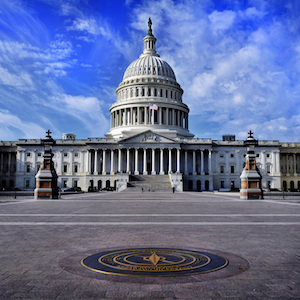[This article has been updated to reflect that Dan Gilbert is not one of EIG's co-founders, he is a member of the Founders Circle, an advisory board with no governance responsibilities. Additionally, Steve Glickman is not a tech entrepreneur, but rather former Senior Economic Advisor at the National Security Council under President Obama.]
Sponsors of a bicameral, bipartisan bill reintroduced legislation late Oct. 19 to give uncovered private-sector American workers access to a federally sponsored retirement plan.
If passed, S. 3102, the Retirement Savings for Americans Act (RSAA) would “help low- and middle-income Americans build wealth and save for retirement,” according to Sen. John Hickenlooper (D-Colo.), one of the bill’s sponsors.
RSAA would require the federal government to pay matching contributions for low- and middle-income workers, but only for those that participate in the plan.
While there are no substantive changes between the original and reintroduced bills, the 5% federal match (1% non-elective and 4% safe harbor) remains a major concern for opponents of the bill, including the American Retirement Association (ARA).
They argue that the match would strongly encourage employers to terminate their 401(k) and similar-style defined contribution plans in favor of the federal plan, eventually leading to a “crowding out” of the country’s private, employer-based retirement saving system.
“The ARA is dedicated to expanding the employer-based retirement system and continues to support initiatives like those in SECURE 2.0 that are intended to expand coverage for communities of color and low-income workers,” ARA CEO Brian Graff said. “We oppose the legislation because we believe the provisions in SECURE 2.0 should be given a chance to make an impact and because we believe this proposal creates a federally funded retirement plan to the detriment of the private system by offering a matching contribution only to those in the program, which is not the direction to go with our country’s retirement system.”
ARA Retirement Education Counsel Robert Richter agreed, noting the federal match would be greater than what’s available to participants in private plans.
“This would give the federal plan an unfair advantage over private plans,” he added, noting participants would also essentially be “on their own since 401(k) advisors would not be involved.”
Sponsored by Hickenlooper and Thom Tillis (R-N.C.), as well as Representatives Terri Sewell (D-Ala. 7th) and Lloyd Smucker (R-Penn. 11th), the bill is championed by the Economic Innovation Group (EIG), an organization founded by Napster and Facebook billionaire Sean Parker and Steve Glickman, former Senior Economic Advisor at the National Security Council under President Obama. Rocket Mortgage majority owner Dan Gilbert is a member of the organization's Founders Circle, an advisory board with no governance responsibilities.
ARA’s Graff believes the bill’s reintroduction is part of a years-long ideological battle to control the nation’s retirement saving system.
Key provisions of the bill include:
- Eligibility and Auto Enrollment: Full- and part-time workers who lack access to an employer-sponsored retirement plan would be eligible for an account and automatically enrolled at 3% of their income. They could choose to increase or decrease their withholding or opt-out entirely at any time. Independent workers (including gig workers) would also be eligible.
- Federal Contribution: Low- and moderate-income workers would be eligible for a 1% automatic contribution (as long as they remain employed) and up to a 4% matching contribution via a refundable federal tax credit. This would begin to phase out at median income.
- Portability: Accounts would remain attached to workers throughout their lifetimes, and workers would be able to stop and start contributions at will.
- Private Assets: The accounts would be the worker’s property, and the assets could be passed down to future generations to help them build wealth and financial security.
- Investment Options: Much like the current Thrift Savings Plan, participants would be given a menu of simple, low-fee investment options to choose from, including lifecycle funds tied to a worker’s estimated retirement date or index funds made of stocks and bonds.
- Log in to post comments
